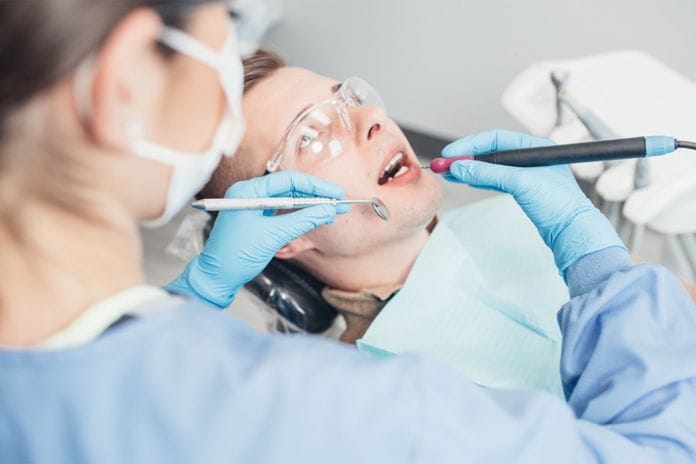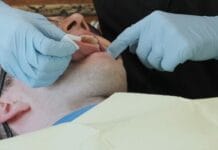Test Your Oral Biofilm Knowledge
1. Dental biofilm contains many types of microorganisms, primarily bacteria. More than 500 distinct microbial species are found in dental biofilm.
Dental biofilm contains many types of microorganisms, more than 500 distinct microbial species, which include the following:
- Streptococci
- Diplococci
- Staphylococci
- Sacrina
- Bacilli
- Coccobacilli
- Fusiform bacilli
- Filamentous bacilli
- Spirochetes
- Vibrios
Hammond, B. Bacterial Structure and Function, in Schuster, G.S., ed.: Oral Microbiology and Infectious Disease, 2nd student ed. Toronto, B.C. Decker, 1998, p. 23.
Wilkins, E.M. (2009). Dental Biofilm and Other Soft Deposits. Clinical Practice of the Dental Hygienist (10th ed., pp. 292-305). Lippincott Williams & Wilkins, a Wolters Kluwer business.
2. Which of the following sequences describes the stages in the formation of biofilm?
Biofilm forms in stages, and it requires a series of complex interactions.
- Pellicle formation: Occurs on the tooth surface by selective adsorption of protein components from the saliva.
- Bacterial multiplication and colonization: Biofilm forms in layers as bacteria multiply and grow.
- Growth and maturation: If left undisturbed, there is continuous adherence of bacteria to the biofilm surface.
- Matrix formation: Certain bacteria produce polysaccharides, glucans, and fructans or levans from dietary sucrose. Polysaccharides contribute to the adhesion of biofilm.
Wilkins, E.M. (2009). Dental Biofilm and Other Soft Deposits. Clinical Practice of the Dental Hygienist (10th ed., pp. 292-305). Lippincott Williams & Wilkins, a Wolters Kluwer business.
3. According to Socransky et al. and the specific plaque hypothesis/complex theory, which of the following is an orange complex bacterium?
"The orange complex consists of bacteria that enable crosstalk between bacteria often referred to as the 'bridging species.' Think of them as a bridge between early colonizers and the more pathogenic bacteria that we find in the red complex. Orange complex bacteria are also associated with increased pocket depth and progressive attachment loss."
The red complex consists of bacteria more likely associated with clinical indicators of periodontal disease, including periodontal pocketing and clinical attachment loss. The red complex includes P. gingivalis, T. forsythensis, and T. denticola.
Hatfield, S. (2020, August 25). Pathogen Classifications: Where Dentistry Has Gone Since The "Complex Theory." Today's RDH. https://www.todaysrdh.com/pathogen-classifications-where-dentistry-has-gone-since-the-complex-theory/
Gurenlian, J.R. The Role of Dental Plaque Biofilm in Oral Health. Journal of Dental Hygiene. 2007; 81(5).
4. Ultrasonic scaling removes more biofilm and less tooth structure than hand scaling.
Routine dental care aims to remove as much biofilm as possible with as little damage to the tooth structure as possible. At the 2014 International Association for Dental Research General Session, a study was presented that showed increased removal of biofilm and decreased removal of tooth structure from ultrasonic scaling when compared to hand scaling.
The Cavitron 300 series ultrasonic scaling system not only provides better biofilm removal while preserving tooth structure but also provides better patient comfort, increased infection prevention, and enhanced control for the hygienist.
It is quieter and produces less heat to make the patient experience more comfortable. The touchscreen interface improves infection control as it is easy to wipe down with fewer crevices. The cable is 28% lighter than older Cavitron units, which is a considerable benefit to the clinician.
Plaumann, A., Rauschenbach, S., Bielfeldt, J., Springer, C., Kahl, M., El-Sayed, K.M.F., Dörfer, C.E., Graetz, C. (2014, June). Effectiveness of Biofilm Removal - Influence of Experience. Conference Paper: IADR General Session and Exhibition 2014.
Dentsply Sirona. (n.d.). Ultrasonic Scaling: Biofilm Beware. https://www.dentsplysirona.com/en-us/discover/discover-by-topic/by-category/preventive/biofilm-beware.html
5. Which of the following are factors that influence biofilm accumulation?
Factors that influence biofilm accumulation include crowded teeth, rough surfaces (restorations and calculus), teeth that are out of occlusion (biofilm can cover the entirety of the tooth due to the absence of friction from mastication), difficult to clean areas (overhangs on fillings and crowns, ledges of calculus, and carious lesions), and bacterial multiplication (thickness of biofilm allows for constant cell division).
Wilkins, E.M. (2009). Dental Biofilm and Other Soft Deposits. Clinical Practice of the Dental Hygienist (10th ed., pp. 292-305). Lippincott Williams & Wilkins, a Wolters Kluwer business.
6. Of the following, which is the best choice to manage biofilm on implant threads?
Biofilm accumulation on implant threads can lead to peri-implantitis and peri-mucositis. Instrument selection for effectively removing biofilm from the threads of implants is lacking. Yet, a study published in 2020 found that the cavitation bubbles from ultrasonic scalers can successfully disrupt biofilm between implant threads.
Effective disruption of biofilm was achieved by placing the ultrasonic scaler tip 0.5 mm away from the implant surface. Operating on high power for 2 seconds was more effective than operating on medium power for 2 seconds.
Vyas, N., Grewal, M., Kuehne, S.A., et al. High speed imaging of biofilm removal from a dental implant model using ultrasonic cavitation. Dental Materials. 2020; 36(6): 733-743. https://doi.org/10.1016/j.dental.2020.03.003. Retrieved from https://pubmed.ncbi.nlm.nih.gov/32299665/
7. The way bacteria communicate and form biofilm is referred to as which of the following?
"Bacteria in biofilm communicate with each other by a process called quorum sensing. This dynamic, sophisticated communication system enables bacteria to monitor each other's presence and modulate their gene expression in response to the number of bacteria in a given area of the biofilm. In addition, as a result of quorum sensing, portions of the biofilm can become detached in order to maintain a cell density compatible with continued survival."
Gurenlian, J.R. The Role of Dental Plaque Biofilm in Oral Health. Journal of Dental Hygiene. 2007; 81(5).












